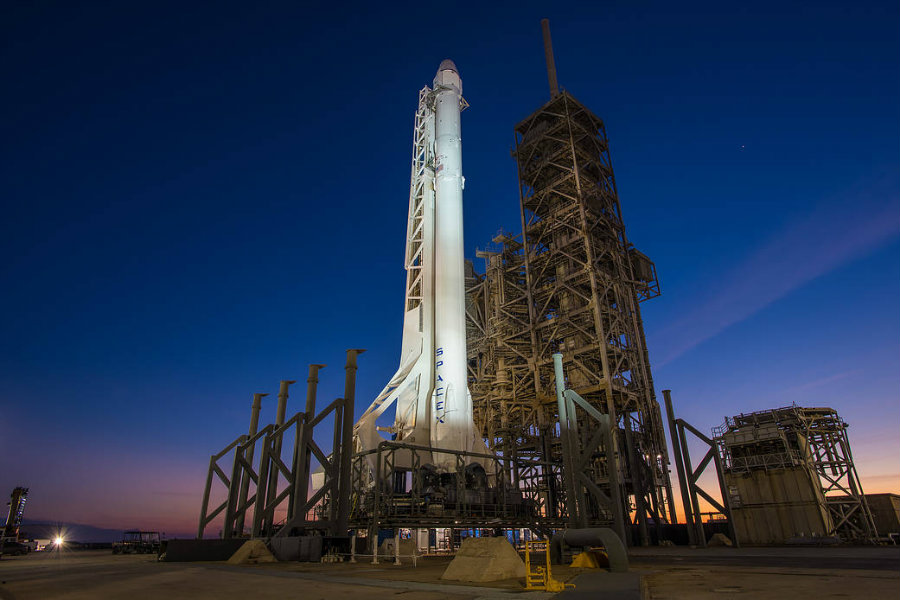One of SpaceX’s Dragon cargo spacecraft safely returned to Earth this Sunday after splashing into the Pacific Ocean near the Southern area of the state of California. The vehicle was carrying more than 2 tons of scientific material that are crucial to a body of investigations ready to continue in NASA’s research centers.
The cargo was full of science experiments and investigation gear that came directly from the International Space Station (ISS). The spaceship was sent to Earth after astronauts Thomas Pesquet (from France) and Shane Kimbrough (from the United States), released the capsule from the ISS on Sunday morning, through the use of a robotic arm.

“Today we said goodbye to Dragon,” Pesquet, that is an astronaut from the European Space Agency, wrote in a Twitter post this Sunday. “She is taking part of us back to the ground with her — important scientific samples, some from the crew!”
The robotic capsule arrived at Earth, specifically to Baja California, U.S., on Sunday at about 10:48 a.m. EDT. Afterward, the capsule was retrieved immediately by SpaceX personnel, and it’s supposed to be sent to NASA in the next hours for pertinent analysis.
The Dragon cargo ship spent one whole month in outer space
Back on February 19, one historical moment took place at the Kennedy Space Center owned by NASA. That day was the first time that one private space flight took off from the same location in which the Apollo 11 started its journey toward the Moon.
The launch of the Falcon 9 spacecraft from SpaceX at NASA’s Kennedy Space Center was quite a novelty, especially since it took off from the same launching pad where the Apollo 11 and many of the other Apollo missions lifted off. According to George Diller, one of NASA’s official commentators, the launch of a commercial space flight from the Pad 39a is historic.
The Dragon cargo arrived at the ISS on February 23 as it was captured by the station’s robotic arm. Pesquet and Kimbrough were the responsible of receiving the shipment. The spaceship was full with more than 2 and a half tons of gear, scientific material, food, and supplies.
However, there was an inconvenient that did not allow the attachment of the cargo to the ISS in the first attempt. The specialized computers inside the Dragon ship detected unusual data concerning the global positioning system that is in charge of pointing the location of the spacecraft about the station.
According to NASA officials, they had to make several technical adjustments and conduct the attachment 24 hours later for the deployment not to be hazardous for the station and its crew.
Why this captured Dragon ship is so important to NASA
There are several pieces of information that have returned with Dragon, and that are crucial for NASA to continue many kinds of research. For example, there are stem cells that can show how the cancer disease evolves when being exposed to near-zero gravity.
In this issue, NASA selected a group of researchers to be in charge of observing stem cell’s growing processes and other natural procedures when exposed to microgravity. This investigation and its results could give up hints regarding how the cancer disease expands and spreads through the human body.

If the investigation concerning stem cells produces great results, the developments of medicine and treatments on Earth will accelerate considerably in the next years, along with the performing of new prevention plans.
Another investigation that will receive new data to study is the Tissue Regeneration-Bone Defect, which is a conjoint program between NASA, the U.S. National Laboratory, and the Center for the Advancement of Science in Space. This study is oriented to the discovery of the factors that prevent vertebrates from reproducing bone and tissue that has been lost, as well as the analysis of how microgravity conditions can affect that process.
In the official press release, NASA acknowledged the importance the International Space Station has had to scientific investigations in the last years.
“For more than 16 years, humans have lived and worked continuously aboard the International Space Station, advancing scientific knowledge and demonstrating new technologies, making research breakthroughs not possible on Earth that will enable long-duration human and robotic exploration into deep space,” NASA official statement read.
NASA stated that the microgravity laboratory is one of the most crucial research places regarding space surveys since people from over 95 countries have united to conduct more than 1,900 studies.
Source: NASA
